In the present day, the beauty market is brimming with an array of products, and it can be quite challenging to discern which cosmetics are natural or organic. In this article, we will delve into the distinctive features that set these two types of products apart, and guide you in identifying them amidst conventional cosmetics.
What is a Natural Cosmetic?
In this segment of the article, we will provide a comprehensive explanation of natural cosmetics and assist you in distinguishing them from traditional cosmetics.
The Definition of Natural Cosmetics
In recent years, there has been a significant shift towards natural cosmetics, with many consumers seeking products that are free from synthetic additives and harmful chemicals. However, what exactly are natural cosmetics, and how are they different from traditional cosmetics?
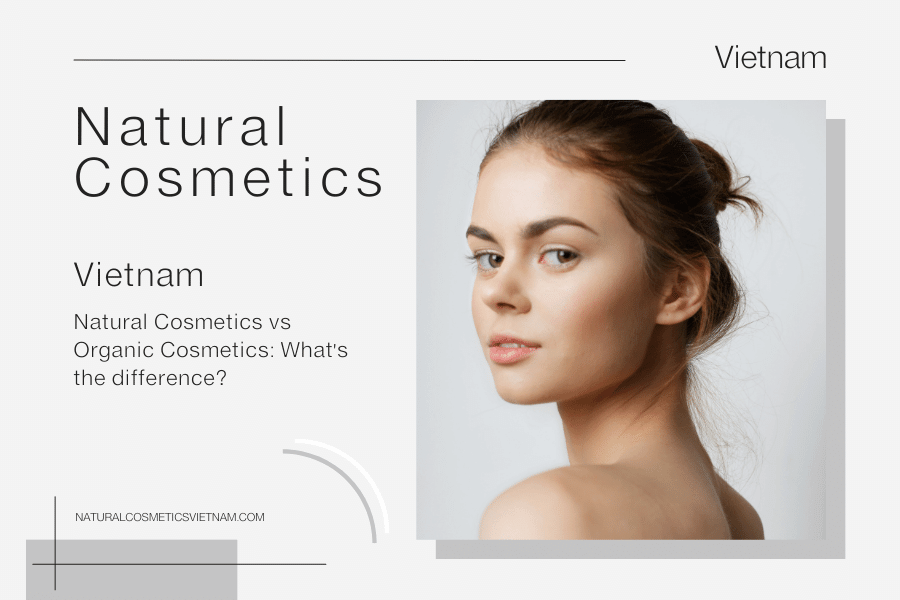
The Definition of Natural Cosmetics
In general, a natural cosmetic is a product that contains at least 95% natural ingredients. These ingredients are derived from natural sources, such as plants, minerals, and animals, and are not chemically altered during production. Natural cosmetics are also free from synthetic fragrances, parabens, and other harmful chemicals that are commonly found in traditional cosmetics.
However, it’s important to note that not all natural cosmetics are created equal. The Cosmébio label, for example, goes above and beyond the standard definition of natural cosmetics. In addition to requiring a minimum of 95% natural ingredients, Cosmébio also has strict restrictions in place for the remaining 5% of the product’s ingredients. Certain ingredients, such as silicones and PEGs, are prohibited, ensuring that the product is as natural as possible.
Cosmébio also takes into account the manufacturing process, ensuring that it produces low environmental stress and creates minimal pollution. This means that not only are Cosmébio products better for your skin, but they are also better for the planet.
Choosing natural cosmetics is a great way to ensure that you are using products that are safe and gentle on your skin. By choosing products that are free from harmful chemicals and synthetic additives, you can avoid irritation, allergies, and other negative side effects associated with traditional cosmetics.
In addition to being better for your skin, natural cosmetics also have a positive impact on the environment. The production of traditional cosmetics often involves the use of harmful chemicals, which can pollute waterways and harm wildlife. By choosing natural cosmetics, you are supporting sustainable and eco-friendly production methods.
In conclusion, natural cosmetics are products that contain at least 95% natural ingredients and are free from synthetic fragrances, parabens, and other harmful chemicals. The Cosmébio label goes above and beyond this definition, ensuring that products are as natural as possible and produced using sustainable and eco-friendly methods. Choosing natural cosmetics is not only better for your skin but also better for the planet.
Don’t be fooled by products imposing as natural!
As the demand for natural cosmetics continues to rise, so does the prevalence of greenwashing. Greenwashing is a marketing tactic used by companies to make their products appear more natural and eco-friendly than they actually are. Unfortunately, this can make it difficult for consumers to distinguish between products that are genuinely natural and those that are not.
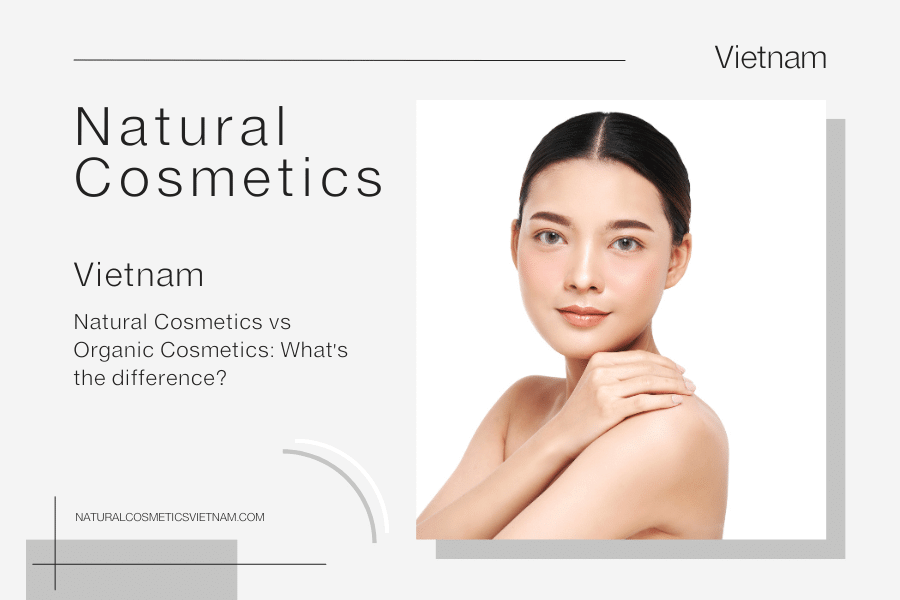
Don’t be fooled by products imposing as natural!
It’s not uncommon to come across cosmetics that claim to contain more than 95% natural ingredients, yet still contain chemicals like silicones, BHT, and phenoxethanol that many consumers are looking to avoid. This can be misleading, and it’s important to be aware of what you’re really buying.
To ensure that you are buying truly natural cosmetics, we recommend looking for the COSMOS NATURAL label. This label guarantees that the cosmetic has been analyzed and conforms to the definition of natural cosmetics. The COSMOS NATURAL label also has strict regulations in place to ensure that the product is free from harmful chemicals and synthetic fragrances.
Additionally, you can check the back of your cosmetic packaging to see the percentage of ingredients with natural origins included in the product. This will give you a better understanding of what you’re putting on your skin and help you make more informed purchasing decisions.
It’s important to be vigilant when shopping for natural cosmetics and not be swayed by misleading marketing tactics. By choosing products that are genuinely natural and free from harmful chemicals, you can ensure that you are taking care of your skin and the environment.
In conclusion, it’s essential not to be fooled by products that imposter as natural. Greenwashing is a growing concern, and it’s important to be aware of what you’re buying. Look for the COSMOS NATURAL label and check the back of your cosmetic packaging to ensure that you are purchasing truly natural cosmetics. By doing so, you can make more informed decisions and choose products that are safe for your skin and the environment.
What is an Organic Cosmetic?
Organic cosmetics are subject to even more stringent requirements than natural cosmetics, as they are certified based on the use of ingredients sourced from organic farming.
The Definition of Organic Cosmetics
As the demand for natural and organic products continues to grow, it’s important to understand the definition of organic cosmetics and how they differ from natural cosmetics. Organic cosmetics are a type of natural cosmetic that goes beyond using natural ingredients and places emphasis on the use of organic ingredients.
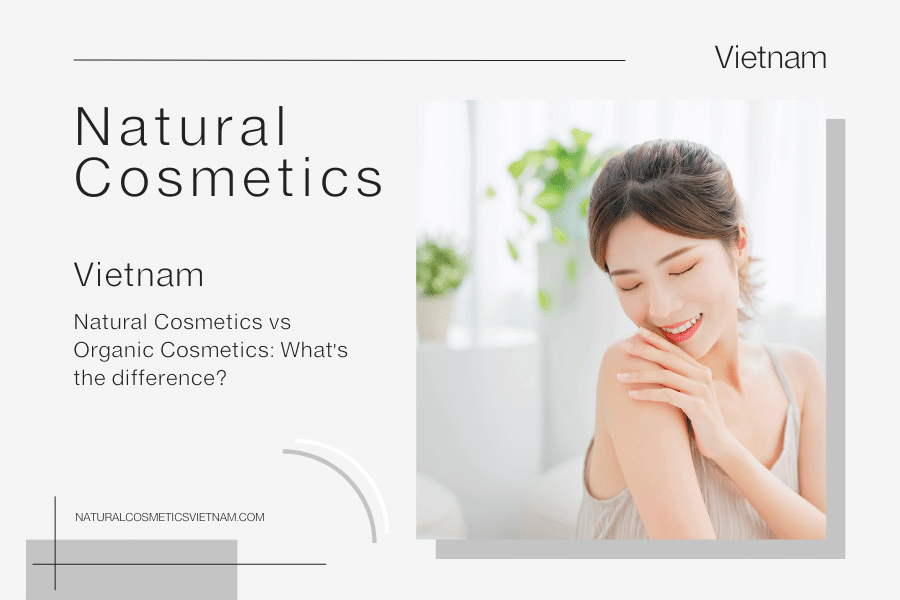
The Definition of Organic Cosmetics
An organic cosmetic is a product that contains at least 95% natural ingredients, with a minimum of 95% of these ingredients originating from organic farming. This means that the ingredients have been grown without the use of harmful pesticides and chemicals that are commonly found in conventional farming.
To identify an organic cosmetic, look for the green oval Cosmébio label. In some cases, this label may also be accompanied by the COSMOS ORGANIC signature, which indicates that the product meets the COSMOS standard for organic products.
In 2017, the Cosmébio association began using only the COSMOS standard for all new organic products that are labeled with their seal. This standard ensures that the product meets strict requirements for the use of organic ingredients and sustainable production practices.
It’s important to note that while natural and organic cosmetics are often used interchangeably, they are not the same. Organic cosmetics are a subset of natural cosmetics and must meet additional criteria for the use of organic ingredients. By choosing organic cosmetics, you can be confident that you are using products that are free from harmful chemicals and produced using sustainable and eco-friendly methods.
In conclusion, organic cosmetics are a type of natural cosmetic that places emphasis on the use of organic ingredients. To identify an organic cosmetic, look for the green oval Cosmébio label or the COSMOS ORGANIC signature. These products meet strict requirements for the use of organic ingredients and sustainable production practices, making them a safe and eco-friendly choice for consumers.
Water and Minerals are certainly natural, but they cannot be organic.
When it comes to natural and organic cosmetics, it’s important to understand which ingredients can be considered organic and which cannot. Water and minerals, which are commonly found in cosmetics, are natural ingredients but cannot be considered organic.
Water, which is present in the majority of cosmetics, cannot be classified as organic because it cannot be cultivated like other ingredients, such as plant extracts. While water is a natural resource, it cannot be grown using organic farming practices.
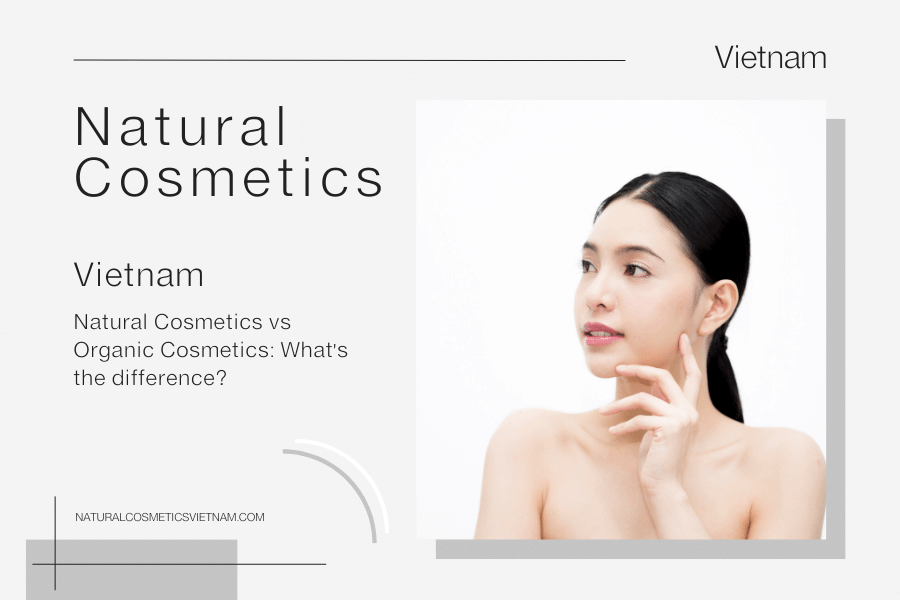
Water and Minerals are certainly natural, but they cannot be organic.
Similarly, minerals such as clay are natural resources that are directly collected from the earth and cannot be considered organic. While minerals are often used in cosmetics for their natural properties, they cannot be grown using organic farming practices.
To ensure transparency in labeling, the percentage of organic ingredients in the product is indicated on the packaging. This percentage represents the amount of organic ingredients compared to the total product, with a minimum of 20% required for non-rinsable products (like moisturizers) and 10% required for rinsable products (like shower gels) or products with a higher percentage of minerals.
It’s important to note that while water and minerals cannot be classified as organic, they can still be natural and safe for use in cosmetics. Many natural cosmetics contain water and mineral-based ingredients that are gentle on the skin and provide a range of benefits.
In conclusion, while water and minerals are natural ingredients commonly found in cosmetics, they cannot be considered organic. However, they can still be safe and beneficial for use in natural and organic cosmetics. When purchasing natural and organic cosmetics, be sure to check the percentage of organic ingredients indicated on the packaging to ensure that you are making an informed decision about the products you use on your skin.
What’s the difference between organic cosmetics and conventional cosmetics?
The cosmetics industry has seen a significant shift towards natural and organic products in recent years, with consumers becoming more aware of the potential risks associated with conventional cosmetics. While organic cosmetics and conventional cosmetics may appear similar at first glance, there are several key differences in their composition and manufacturing processes.
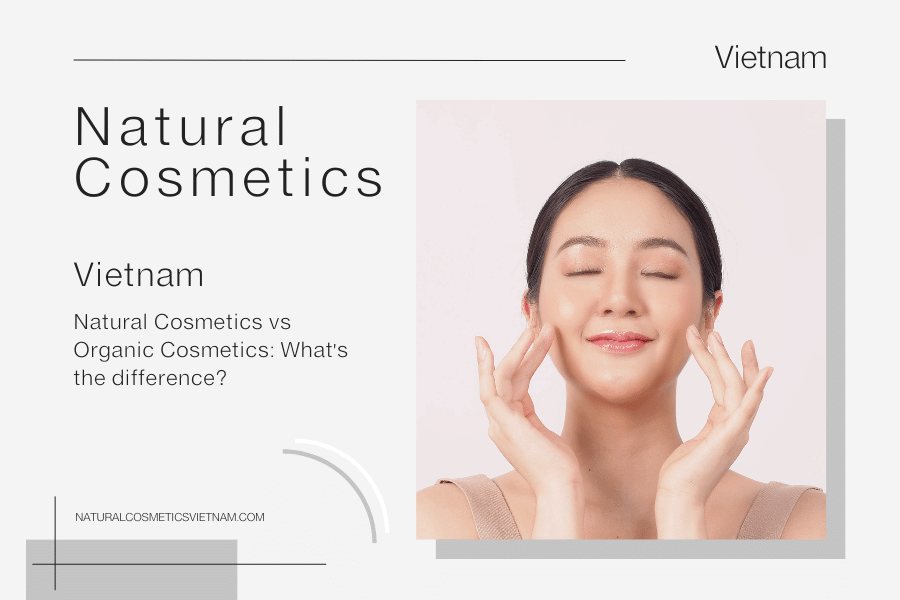
What’s the difference between organic cosmetics and conventional cosmetics?
One of the main differences between organic cosmetics and conventional cosmetics is their use of ingredients. Organic cosmetics are formulated using a minimum of 95% natural ingredients, with a minimum of 95% of those ingredients being sourced from organic farming. In contrast, conventional cosmetics may contain a mix of natural and synthetic ingredients, with no requirement for organic sourcing.
Another key difference between organic cosmetics and conventional cosmetics is the use of fragrances. Conventional cosmetics often use artificial fragrances, which can cause skin irritation and other negative side effects. In contrast, organic cosmetics use natural fragrances such as essential oils, which provide added benefits to the skin.
When it comes to the manufacturing process, organic cosmetics tend to be more environmentally friendly than conventional cosmetics. Conventional cosmetics often use manufacturing methods that are highly polluting and not considerate of the people employed in their production. Organic cosmetics, on the other hand, are produced using sustainable and eco-friendly methods that minimize their impact on the environment.
In addition, conventional cosmetics are controlled by the European standard n°1223/2009, which allows the use of controversial ingredients. In contrast, organic cosmetics formulate their products with consideration of the ingredients that have been blacklisted by the organic standard.
In conclusion, the difference between organic cosmetics and conventional cosmetics is primarily in their composition and manufacturing processes. Organic cosmetics use a higher percentage of natural and organic ingredients, natural fragrances, and sustainable production methods, while conventional cosmetics may contain a mix of natural and synthetic ingredients and may not be environmentally friendly. By choosing organic cosmetics, consumers can ensure that they are using products that are safer and more sustainable for both their skin and the environment.
Reference
COSMOS ORGANIC
COSMOS ORGANIC is a certification program that ensures the integrity of organic cosmetics and personal care products. It is one of the most widely recognized standards for natural and organic cosmetics worldwide and is used by many leading brands in the industry.
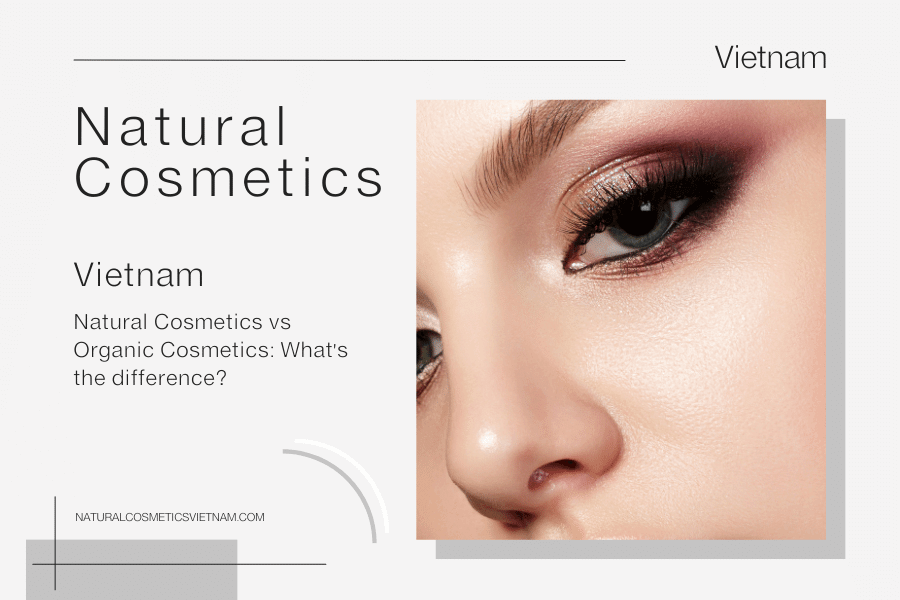
COSMOS ORGANIC
The COSMOS ORGANIC standard is based on strict criteria for the use of organic and natural ingredients, environmentally friendly production processes, and social responsibility. In order to be certified, a product must meet all of these criteria, and the production process must be subject to rigorous inspection and certification.
The COSMOS ORGANIC standard requires that a minimum of 95% of a product’s total ingredients be of natural origin, with a minimum of 20% of these ingredients being organic. The remaining 5% of ingredients are subject to strict restrictions, and synthetic fragrances, colors, and preservatives are not allowed.
In addition to the use of organic and natural ingredients, the COSMOS ORGANIC standard requires that the production process be environmentally friendly. This includes minimizing energy consumption, reducing waste, and using renewable resources whenever possible.
Social responsibility is also a key aspect of the COSMOS ORGANIC standard. The production process must be fair, with respect for workers’ rights, and the use of child labor is strictly prohibited.
COSMOS ORGANIC is a collaborative effort between several major organic certification bodies, including Ecocert, BDIH, Soil Association, and Cosmebio. The program was created in response to the growing demand for natural and organic cosmetics and aims to provide consumers with a reliable way to identify and choose products that are genuinely natural and organic.
The COSMOS ORGANIC certification process involves a comprehensive inspection and certification procedure, which includes an assessment of the product’s ingredients, production processes, and social responsibility. Companies must also undergo regular audits to maintain their certification.
COSMOS ORGANIC certification is recognized worldwide and is a reliable way for consumers to identify and choose products that are genuinely natural and organic. By choosing products with the COSMOS ORGANIC label, consumers can be confident that they are using products that are safe, environmentally friendly, and socially responsible.
In conclusion, COSMOS ORGANIC is a certification program that ensures the integrity of organic cosmetics and personal care products. It requires a minimum of 95% natural ingredients, with a minimum of 20% of these ingredients being organic, and prohibits the use of synthetic fragrances, colors, and preservatives. The production process must also be environmentally friendly and socially responsible. By choosing products with the COSMOS ORGANIC label, consumers can be confident that they are using products that are safe, environmentally friendly, and socially responsible.
Cosmébio
The Cosmébio label is a certification program that ensures the authenticity of natural and organic cosmetics. It is one of the most recognized standards for natural and organic cosmetics in Europe and is used by many leading brands in the industry.
The Cosmébio label requires a minimum of 95% natural ingredients in cosmetics, with a minimum of 10% of these ingredients coming from organic farming. It also prohibits the use of synthetic fragrances, colors, and preservatives that are known to be harmful to health and the environment.
The Cosmébio label is based on strict criteria for the use of natural and organic ingredients, environmentally friendly production processes, and social responsibility. In order to be certified, a product must meet all of these criteria, and the production process must be subject to rigorous inspection and certification.
The Cosmébio label is awarded by an independent third-party certification body, which ensures that the products meet the strict standards set out by the program. This includes a thorough assessment of the product’s ingredients, production processes, and social responsibility.
In addition to the use of natural and organic ingredients, the Cosmébio label requires that the production process be environmentally friendly. This includes minimizing energy consumption, reducing waste, and using renewable resources whenever possible.
Social responsibility is also a key aspect of the Cosmébio label. The production process must be fair, with respect for workers’ rights, and the use of child labor is strictly prohibited.
The Cosmébio label is a collaborative effort between several major organic certification bodies, including Ecocert, BDIH, Soil Association, and Cosmebio. The program was created in response to the growing demand for natural and organic cosmetics and aims to provide consumers with a reliable way to identify and choose products that are genuinely natural and organic.
The Cosmébio label is recognized worldwide and is a reliable way for consumers to identify and choose products that are genuinely natural and organic. By choosing products with the Cosmébio label, consumers can be confident that they are using products that are safe, environmentally friendly, and socially responsible.
In conclusion, the Cosmébio label is a certification program that ensures the authenticity of natural and organic cosmetics. It requires a minimum of 95% natural ingredients, with a minimum of 10% of these ingredients coming from organic farming, and prohibits the use of synthetic fragrances, colors, and preservatives. The production process must also be environmentally friendly and socially responsible. By choosing products with the Cosmébio label, consumers can be confident that they are using products that are safe, environmentally friendly, and socially responsible.
BHT
Butylated hydroxytoluene, more commonly known as BHT, is a synthetic antioxidant that is commonly used in the cosmetics industry. It is used to prevent the oxidation of oils and fats in cosmetic products, which can lead to rancidity and spoilage.
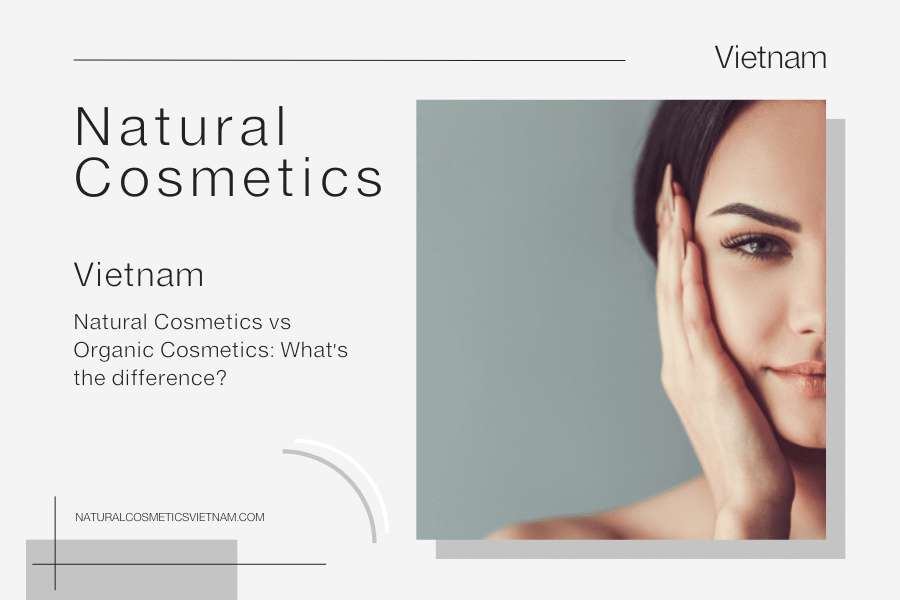
What’s the difference between organic cosmetics and conventional cosmetics?
BHT is a controversial ingredient in cosmetics, and there has been much debate about its safety and potential health risks. While some studies have suggested that BHT may have harmful effects on the human body, other studies have found no evidence to support these claims.
One of the main concerns about BHT is that it may be a carcinogen, meaning that it may cause cancer in humans. However, studies on animals have produced mixed results, with some studies suggesting that BHT may be carcinogenic, while others have found no evidence of this.
Another concern about BHT is that it may disrupt hormone function in the body, leading to potential health problems such as infertility and cancer. However, once again, there is little scientific evidence to support this claim.
Despite these concerns, BHT is still commonly used in cosmetics and other personal care products. The U.S. Food and Drug Administration (FDA) has classified BHT as generally recognized as safe (GRAS) for use in food, and it is also approved for use in cosmetics in Europe.
However, there is growing concern among consumers about the safety of BHT and other synthetic ingredients in cosmetics. Many consumers are turning to natural and organic cosmetics, which do not contain synthetic ingredients like BHT.
If you are concerned about the potential health risks of BHT, it is important to read the ingredient labels of the cosmetics and personal care products you use. Look for products that do not contain BHT, and instead contain natural and organic ingredients that have been shown to be safe and effective.
In conclusion, BHT is a synthetic antioxidant commonly used in the cosmetics industry to prevent the oxidation of oils and fats in cosmetic products. While there is some concern about its safety and potential health risks, there is still much debate and conflicting evidence on the matter. If you are concerned about the safety of BHT, it is important to read ingredient labels and consider natural and organic cosmetics that do not contain synthetic ingredients.
Phenoxethanol
Phenoxyethanol is a synthetic preservative commonly used in the cosmetics industry to prevent the growth of bacteria and fungi in cosmetic products. It is a controversial ingredient, and there has been much debate about its safety and potential health risks.
One of the main concerns about phenoxyethanol is that it may be a skin irritant and sensitizer. This means that it can cause skin irritation and allergic reactions in some people, especially those with sensitive skin. However, the European Union has deemed phenoxyethanol safe for use in cosmetics at a concentration of up to 1%.
Another concern about phenoxyethanol is that it may have toxic effects on the nervous system. This is based on animal studies that have suggested that high doses of phenoxyethanol may cause damage to the nervous system. However, these studies have been criticized for using doses that are much higher than those used in cosmetics, and there is no evidence to suggest that phenoxyethanol has toxic effects on the nervous system at the concentrations used in cosmetics.
Despite these concerns, phenoxyethanol is still commonly used in cosmetics and other personal care products. The U.S. Food and Drug Administration (FDA) has classified phenoxyethanol as safe for use in cosmetics, and it is also approved for use in cosmetics in Europe.
However, there is growing concern among consumers about the safety of phenoxyethanol and other synthetic ingredients in cosmetics. Many consumers are turning to natural and organic cosmetics, which do not contain synthetic preservatives like phenoxyethanol.
If you are concerned about the potential health risks of phenoxyethanol, it is important to read the ingredient labels of the cosmetics and personal care products you use. Look for products that do not contain phenoxyethanol, and instead contain natural and organic ingredients that have been shown to be safe and effective.
In conclusion, phenoxyethanol is a synthetic preservative commonly used in the cosmetics industry to prevent the growth of bacteria and fungi in cosmetic products. While there is some concern about its safety and potential health risks, there is still much debate and conflicting evidence on the matter. If you are concerned about the safety of phenoxyethanol, it is important to read ingredient labels and consider natural and organic cosmetics that do not contain synthetic preservatives.
The U.S. Food and Drug Administration (FDA)
The U.S. Food and Drug Administration (FDA) is a federal agency of the United States Department of Health and Human Services. It is responsible for protecting and promoting public health through the regulation of food, drugs, medical devices, and cosmetics.
One of the main areas of responsibility for the FDA is the regulation of cosmetics. The FDA defines cosmetics as “articles intended to be rubbed, poured, sprinkled, or sprayed on, introduced into, or otherwise applied to the human body…for cleansing, beautifying, promoting attractiveness, or altering the appearance.”
The FDA does not have the authority to require cosmetic products or their ingredients to be approved before they are marketed, with the exception of color additives. However, cosmetic manufacturers are responsible for ensuring the safety of their products before they are sold to consumers.
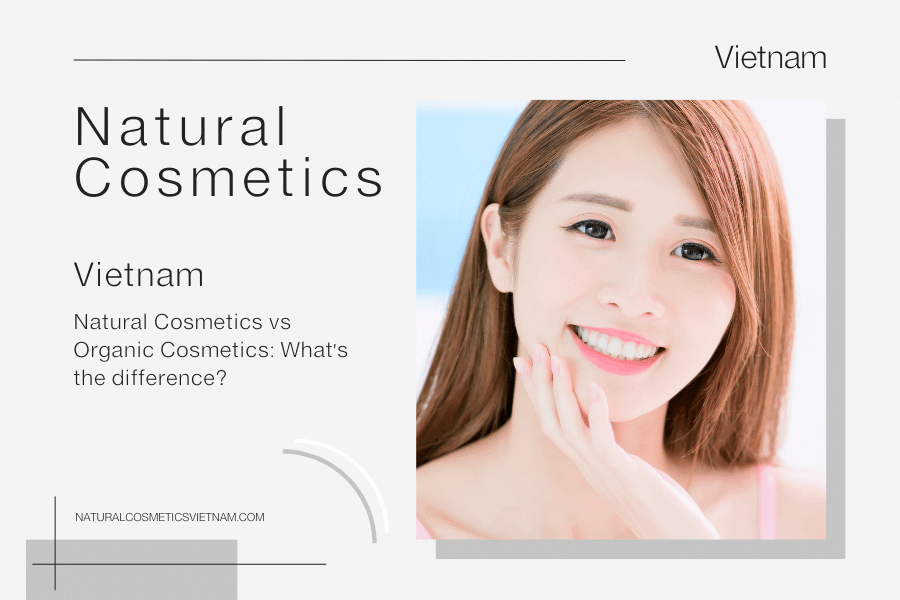
What’s the difference between organic cosmetics and conventional cosmetics?
The FDA regulates cosmetics through a system of post-market surveillance, which means that the agency monitors the safety of cosmetic products once they are on the market. If the FDA determines that a cosmetic product is unsafe or misbranded, it has the authority to take enforcement action, including seizing the product, issuing warning letters, or taking legal action against the manufacturer.
In addition to monitoring the safety of cosmetic products, the FDA also sets regulations for the labeling of cosmetic products. Cosmetic products must include a list of ingredients in descending order of predominance, and the labeling must not be false or misleading.
The FDA also has the authority to establish standards of identity for certain cosmetic products. For example, the agency has established standards of identity for moisturizing creams, lipsticks, and sunscreens.
While the FDA plays an important role in regulating cosmetics, there is ongoing debate about the effectiveness of its regulatory framework. Critics argue that the FDA’s oversight of cosmetic products is inadequate, and that more needs to be done to ensure the safety of cosmetic products and their ingredients.
In conclusion, the U.S. Food and Drug Administration (FDA) is a federal agency responsible for protecting and promoting public health through the regulation of food, drugs, medical devices, and cosmetics. While the FDA regulates cosmetics through a system of post-market surveillance and sets regulations for labeling and standards of identity, there is ongoing debate about the effectiveness of its regulatory framework. Consumers are encouraged to educate themselves on the ingredients in cosmetic products and to choose products that have been certified as safe by independent third-party organizations.
Non-rinsable products
Non-rinsable products are cosmetic products that are designed to be left on the skin and not washed off, such as lotions, creams, and serums. These products are used to moisturize, protect, and enhance the appearance of the skin, but they can also have an impact on the environment and your skin’s health.
One of the main concerns about non-rinsable products is their impact on the environment. Many of these products contain synthetic ingredients that can be harmful to aquatic life when they are washed down the drain. These ingredients can accumulate in waterways and have a negative impact on aquatic ecosystems.
To address this concern, many cosmetic companies are turning to natural and organic ingredients that are safer for the environment. They are also developing packaging that is recyclable or made from sustainable materials.
Another concern about non-rinsable products is their impact on your skin’s health. When these products are left on the skin for long periods of time, they can clog pores and cause breakouts. This is especially true for products that contain synthetic ingredients, such as fragrances and preservatives, which can be irritating to the skin.
To minimize the risk of skin irritation and breakouts, it is important to choose non-rinsable products that are formulated with natural and organic ingredients. These ingredients are less likely to cause skin irritation and are gentler on the skin.
In addition to choosing non-rinsable products with natural and organic ingredients, it is also important to follow a good skincare routine. This includes cleansing the skin regularly to remove dirt, oil, and makeup, and using products that are appropriate for your skin type.
In conclusion, non-rinsable products are cosmetic products that are designed to be left on the skin and not washed off. While these products can be beneficial for moisturizing and protecting the skin, they can also have an impact on the environment and your skin’s health. To minimize the risks associated with non-rinsable products, it is important to choose products that are formulated with natural and organic ingredients, and to follow a good skincare routine that includes regular cleansing.











Leave a reply